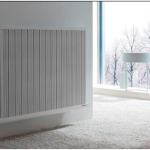No one can foresee the long-term social consequences of automation, but one thing is certain: for many businesses automation is a necessity, not a choice.
Those in which quality control is paramount are a case in point. Robots and automated production lines overseen by A.I. can produce identical items again and again with almost no variation. If the predictability of the product is vital to safety – as in aerospace, for example – it is almost impossible not to embrace it.
Likewise, when robots can replace human workers in unhealthy, hazardous or monotonous environments, there are compelling moral and economic arguments for automation.
Robots have been in use for several years – welding, paint spraying, fettling, drilling, packing and palletizing – but most of these machines have been cumbersome and expensive. These two factors have limited their productivity and the range of tasks they could perform.
Lighter, Faster, Cheaper
By combining other new technologies, it has become possible to deploy faster, cheaper, more agile robots. An example is the recent availability of effective metal bonding adhesive (see http://www.ct1ltd.com/product-applications/metal-to-metal-adhesive/). Replacing unwieldy welding, soldering and riveting attachments with lightweight adhesive injectors allows new levels of precision and dexterity, both for electronic fabrication and general mechanical assembling.
Consequently, modern robotics can offer higher productivity and lower overheads than both manual CNC machines and the previous generation of automated devices. Many enterprises will be unable to compete without them.
Labour costs are also changing. Offshore labour in places like China is not so cheap anymore, and exchange rates will exacerbate this trend. The balance of costs between robotics and manual labour can only shift further toward robots in years to come.
Maintenance
As well as the high initial costs of cumbersome first-generation robots there were also high costs in maintenance. Again, simpler lighter machines – enabled by technologies like metal bonding adhesive – are diminishing those overheads. Modern robots often run 24/7 without needing interventions from human supervisors.
Such robots are also safer, avoiding some of the potential inconvenience posed by a growing body of legislation around factory automation.
Programming
Smaller robots can work in tighter spaces and therefore undertake more tasks. Combined with easier and more adaptable programming interfaces, your robot can produce one product today and a different one tomorrow, constantly adapting to demand.





Average Rating